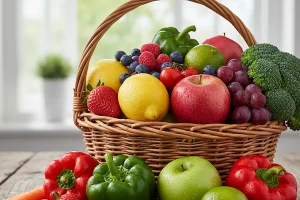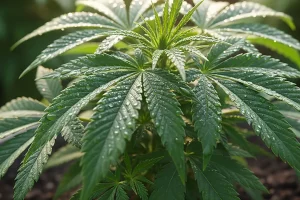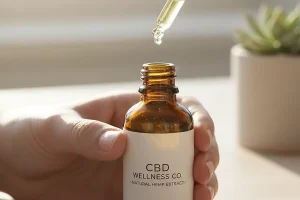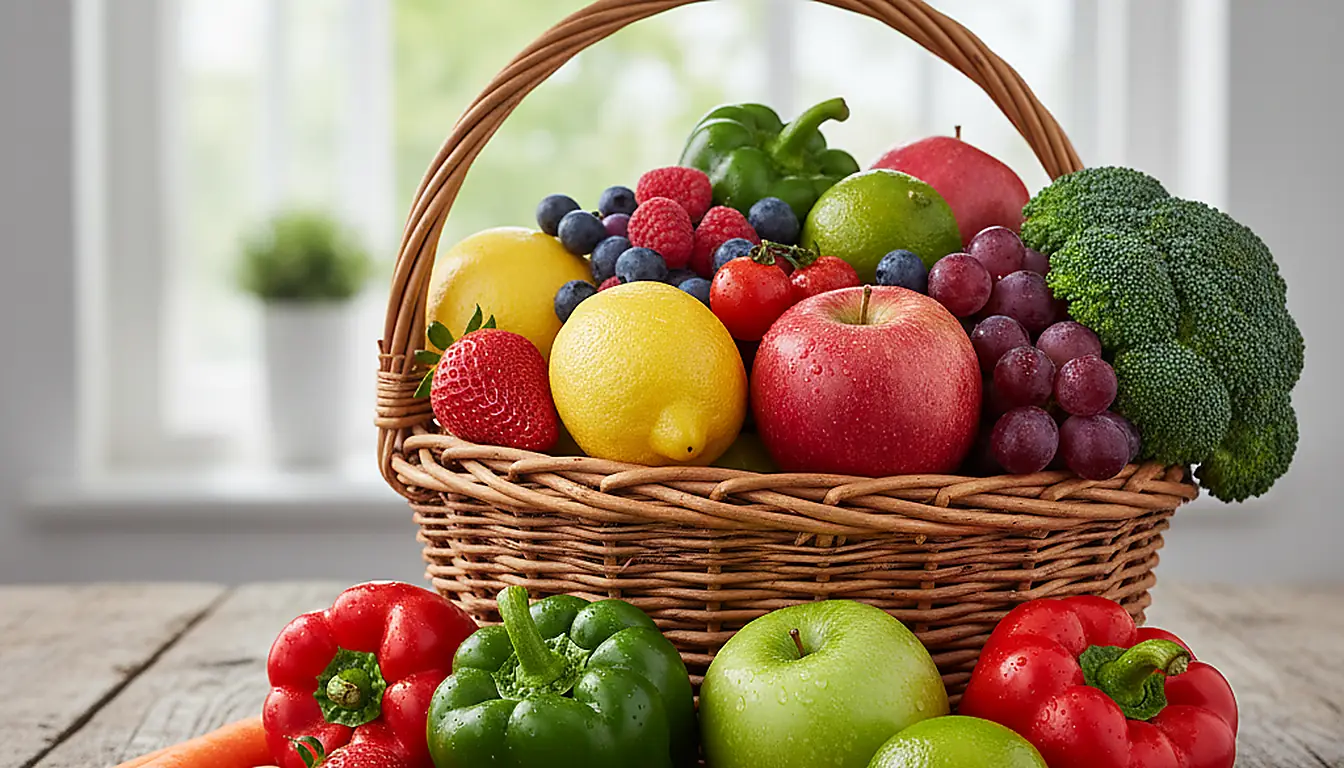Estimated Reading Time: 10 minutes
YYu know, there’s a quiet corner in my memory, a moment when I first heard about CBD. It was a few years back, and honestly, my initial reaction was a mix of skepticism and curiosity. I’d seen the headlines, heard whispers from friends, but the whole thing felt… fuzzy. Like trying to grab smoke.
People talked about CBD benefits for everything from sleep to stress, but what was it *really*? What was in it?
Here’s where it gets practical.
That’s when my journey to truly understand the nitty-gritty, the genuine CBD nutrition facts, really began.
I remember sitting at my kitchen table one rainy afternoon, staring at a little bottle of CBD oil a friend had given me. The label had a long list of ingredients I didn’t quite grasp, and frankly, it felt intimidating. I wanted to know, definitively, what I was putting into my body.
What were the CBD nutrition facts behind this trending wellness elixir? This wasn’t just about trying something new; it was about integrating it into *my* health routine, responsibly and knowledgeably.
Wait, Do CBD Products Even Have “Nutrition Facts” Like My Cereal Box?
Table of Contents
- Wait, Do CBD Products Even Have “Nutrition Facts” Like My Cereal Box?
- Full-Spectrum, Broad-Spectrum, Isolate: My Journey Through the CBD Forest
- Full-Spectrum CBD: The Whole Plant Experience
- Broad-Spectrum CBD: The Best of Both Worlds?
- CBD Isolate: Pure and Simple
- Decoding the Label: My Practical Guide to Real CBD “Nutrition” Facts
- The CBD Content: Don’t Just Look at Bottle Size!
- The Certificate of Analysis (COA): Your Golden Ticket to Trust
- Ingredients List: What Else is Tagging Along?
- The “Nourishment” Angle: How CBD Supports My Wellness Journey
- Common Myths I’ve Heard (and Busted!) About CBD
- Myth 1: CBD Will Get You High.
- Myth 2: All CBD Products Are the Same.
- Myth 3: CBD Is a Miracle Cure.
- A Peek into CBD’s Past and Future
- My Personal Checklist for Choosing Quality CBD: Your Practical Guide
- Wrapping Up: Your Wellness, Your Choice
Okay, let’s clear the air right away, because this was one of my first big’aha!’moments. When we talk about “cbd nutrition facts,” it’s not quite the same as looking at the calorie count or vitamin percentages on your breakfast cereal.
CBD, or cannabidiol, isn’t a macronutrient like protein or carbs, nor is it a vitamin or mineral in the traditional sense. It’s a cannabinoid, a compound derived from the cannabis plant, specifically industrial hemp.
What we *are* looking for when we dig into CBD nutrition facts are things like the concentration of CBD itself, the presence of other beneficial compounds like terpenes and minor cannabinoids, and crucially, what *isn’t* there – like heavy metals or pesticides.
Small change, big shift—at least for me.
It’s more about understanding the cannabinoid profile and the purity of the hemp extract than counting calories.
My personal dive into this taught me that the “nutrition” aspect of CBD is really about understanding its chemical makeup and how it interacts with our endocannabinoid system to support overall natural wellness.
Full-Spectrum, Broad-Spectrum, Isolate: My Journey Through the CBD Forest
This part used to confuse me SO much. It felt like walking into a dense forest without a map. But understanding these distinctions is truly at the heart of grasping CBD nutrition facts. Let me break down what I’ve learned:
Full-Spectrum CBD: The Whole Plant Experience
When I first tried full-spectrum, I was told it’s like getting the whole orchestra, not just the soloist.
This means it contains all the naturally occurring compounds found in the hemp plant: CBD, other minor cannabinoids (like CBG, CBN, CBC), terpenes (which give plants their smell and contribute to effects), and a trace amount of THC (tetrahydrocannabinol), usually less than 0.3%.
This small amount of THC is federally legal and non-intoxicating, meaning it won’t get you high. The idea here is the’entourage effect’– where all these compounds work together synergistically, potentially enhancing the overall therapeutic effects.
It’s like a symphony, where each instrument plays its part to create a richer sound.
A 2015 study published in the journal Pharmacology & Pharmacy highlighted that full-spectrum CBD was more effective than CBD isolate in treating inflammation due to this very entourage effect, a finding that really solidified my preference.
Broad-Spectrum CBD: The Best of Both Worlds?
If full-spectrum is the orchestra, broad-spectrum is the orchestra without the triangle player (THC). It contains CBD and other cannabinoids and terpenes, but the THC has been removed to undetectable levels.
This is a great option for those who want the benefits of the entourage effect but absolutely no THC, perhaps due to drug testing concerns or personal preference.
I know a few friends who choose this because of their jobs, and it offers them peace of mind while still getting many of the desired CBD benefits.
CBD Isolate: Pure and Simple
Then there’s CBD isolate, which is pure CBD, nothing else. It’s 99%+ pure cannabidiol, with all other plant compounds, including terpenes and other cannabinoids, removed.
For someone who might be sensitive to other compounds or wants to ensure zero THC, this is the go-to. I sometimes use isolate in specific homemade topicals, but for internal use, I’ve personally gravitated towards the broader spectrum options because I feel they offer a more holistic effect.
Decoding the Label: My Practical Guide to Real CBD “Nutrition” Facts
Alright, this is where the rubber meets the road. If you’re serious about integrating CBD into your life, you *have* to become a label detective. This is how I personally verify the true CBD nutrition facts of any product.
-
The CBD Content: Don’t Just Look at Bottle Size!
This sounds obvious, but it’s often overlooked. A 30ml bottle might have 500mg of CBD or 3000mg. The concentration matters! Always look for the total milligrams of CBD per bottle, and then do a quick calculation for mg per serving.
For example, if a 30ml bottle has 1500mg of CBD and a serving is 1ml, then you’re getting 50mg of CBD per dose. This helps immensely when trying to figure out your ideal CBD dosage.
-
The Certificate of Analysis (COA): Your Golden Ticket to Trust

Honestly, it’s a tiny tweak—with a steady payoff.
This, for me, is non-negotiable. Every reputable CBD brand provides a COA from a third-party lab testing facility. Think of it as the product’s report card. On the COA, you’ll find:
- Cannabinoid Profile: This shows you the exact amounts of CBD, THC (making sure it’s below 0.3% for full-spectrum or undetectable for broad/isolate), and other minor cannabinoids. This is the heart of your CBD nutrition facts!
- Terpene Profile: Some COAs will list the specific terpenes present, which is great for understanding potential aroma and synergistic effects.
- Purity Testing: Crucially, the COA will also show testing for contaminants like heavy metals, pesticides, microbial impurities (mold, bacteria), and residual solvents. This is where you truly confirm the product’s safety. I’ve become quite good at scanning these now, making sure everything is within acceptable limits. If a brand doesn’t offer a COA, or it’s hard to find, I simply walk away. No compromise on safety.
-
Ingredients List: What Else is Tagging Along?
Beyond the hemp extract, what’s in there? Often, it’s a carrier oil like MCT oil (coconut oil derivative), hemp seed oil, or olive oil. These are generally fine, but always check for anything you might be allergic to or prefer to avoid. Some products have added flavorings or other botanicals.
I personally prefer simpler formulations, but it’s all about what aligns with *your* body and preferences.
The “Nourishment” Angle: How CBD Supports My Wellness Journey
Once I started to understand the real CBD nutrition facts, I felt empowered. It wasn’t just about feeling a bit calmer; it was about supporting my body’s natural systems. For me, CBD isn’t a magic bullet; it’s a piece of a much larger wellness puzzle.
I’ve found it incredibly helpful in managing the everyday stresses that used to feel overwhelming. That constant hum of low-level anxiety that would sometimes cling to me like a damp blanket? It feels lighter now. My sleep, which used to be quite erratic, has found a more consistent rhythm.
It’s not about being sedated; it’s about a gentle nudge towards balance.
It’s fascinating to me how it works with our endocannabinoid system (ECS), a complex network of receptors throughout our body that helps maintain homeostasis, or balance.
Think of the ECS as the body’s master regulator, and cannabinoids like CBD seem to interact with it, encouraging it to do its job more effectively. Dr.
Ethan Russo, a neurologist and cannabis researcher, has often spoken about the ECS as a vital homeostatic regulator, and how phytocannabinoids like CBD can help modulate its activity, contributing to overall health. This scientific backing truly solidified my personal experiences.
Common Myths I’ve Heard (and Busted!) About CBD
Oh, the myths! There are so many swirling around, and they can really cloud your understanding of genuine cbd nutrition facts. Let me tackle a few:
-
Myth 1: CBD Will Get You High.
Absolutely not! This is perhaps the biggest misconception. CBD is non-intoxicating. The compound responsible for the’high’is THC. As long as you’re using a quality full-spectrum product with less than 0.3% THC or a broad-spectrum/isolate product, you will not experience psychoactive effects.
My first time trying CBD, I was a little nervous, half-expecting some altered state, but it was just a gentle calm. It’s a huge relief for many to understand this.
-
Myth 2: All CBD Products Are the Same.
I wish! But no, this couldn’t be further from the truth. The quality, potency, and purity of CBD products vary wildly. This is precisely why understanding CBD nutrition facts and scrutinizing COAs is so important.
A cheap product from a gas station might not contain the CBD it claims, or worse, could be contaminated. It’s truly a’you get what you pay for’situation in many cases.
-
Myth 3: CBD Is a Miracle Cure.
While CBD has shown incredible promise in various areas of wellness, it’s not a magic bullet.
It’s a tool, a natural plant-based remedies that can support your body’s systems, but it works best as part of a holistic approach to health, including good diet, exercise, and stress management.
I’ve seen people expect too much too soon, and then get disappointed. My advice? Have realistic expectations and view it as a helpful ally, not a sole solution.
A Peek into CBD’s Past and Future
It’s wild to think about how far we’ve come. Hemp, the plant CBD comes from, has been cultivated by humans for thousands of years for its fibers, seeds, and medicinal properties. Ancient civilizations, from the Chinese to the Egyptians, used it.
Yet, in modern times, it got tangled up in the legal complexities surrounding marijuana. It wasn’t until the 2018 Farm Bill in the United States that industrial hemp (and by extension, hemp-derived CBD) was federally legalized. This was a monumental shift!
Since then, the industry has exploded. What was once niche is now mainstream. I believe the future of CBD nutrition facts will involve even more robust research, clearer regulations, and a deeper understanding of specific cannabinoid interactions.
We’re just scratching the surface of what these incredible plant compounds can do. It’s an exciting time to be exploring natural wellness!
My Personal Checklist for Choosing Quality CBD: Your Practical Guide
After all my research and personal trials, I’ve developed a go-to checklist for myself. I hope it helps you too!
- Always Check for a COA: It should be easily accessible on the brand’s website or via a QR code on the packaging. No COA, no purchase. Period.
- Review the Cannabinoid Profile: Does it match what the label claims? Is the THC content legal?
- Purity Matters: Scan the COA for heavy metals, pesticides, and other contaminants. Clean products are essential for your health.
- Extraction Method: I prefer brands that use CO2 extraction, as it’s a cleaner method that avoids harsh chemical solvents.
- Hemp Source: Where is the hemp grown? U.S.-grown hemp is often preferred due to stricter agricultural regulations.
- Customer Reviews: What are other people saying? While not definitive, it can offer insights into customer experience and product effectiveness.
- Brand Transparency: Do they clearly explain their processes, from seed to sale? Do they educate their customers on CBD nutrition facts?
- Start Low, Go Slow: Especially if you’re new to CBD, begin with a small CBD dosage and gradually increase until you find what works for you. Everyone’s body is different!
Wrapping Up: Your Wellness, Your Choice
My journey into understanding CBD nutrition facts has been incredibly rewarding. It’s transformed CBD from a confusing trend into a valuable, understood tool in my wellness kit.
It’s not about blindly following fads; it’s about informed choices, about truly knowing what you’re putting into your body, and understanding how it can support your unique path to health.
I genuinely hope my experience, my little explorations, and my practical tips help you navigate the world of CBD with more confidence. Remember, you’re in charge of your health journey. Be curious, be discerning, and always listen to what your body tells you. Here’s to feeling good, naturally!
document.addEventListener(‘DOMContentLoaded’, function() {
// 调整社交分享按钮位置
var sharingContainer = document.querySelector(‘.sharedaddy.sd-sharing-enabled’);
var recommendedReading = document.querySelector(‘h2:contains(“Recommended Reading”)’);
if(sharingContainer && recommendedReading) {
// 移动社交分享按钮到推荐阅读上方
var parent = recommendedReading.parentNode;
parent.insertBefore(sharingContainer, recommendedReading);
}
});







